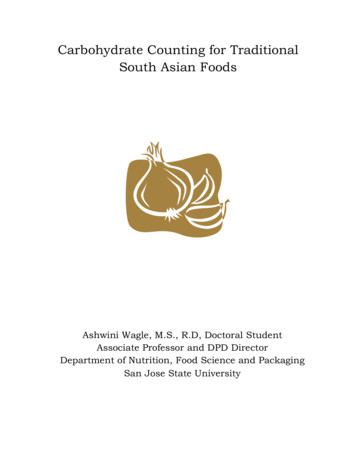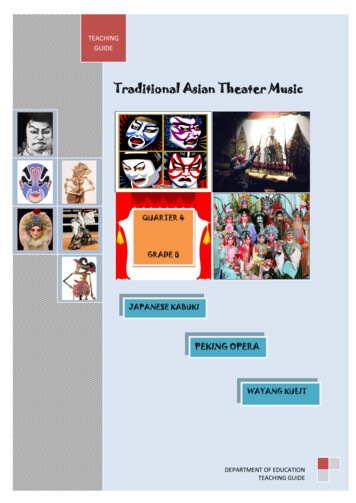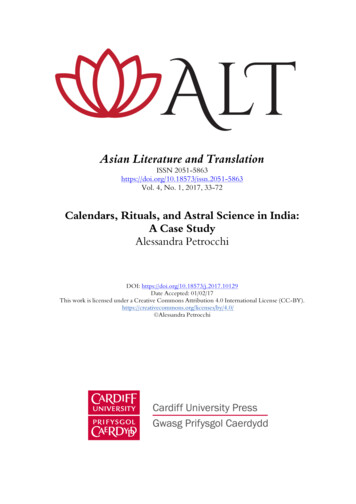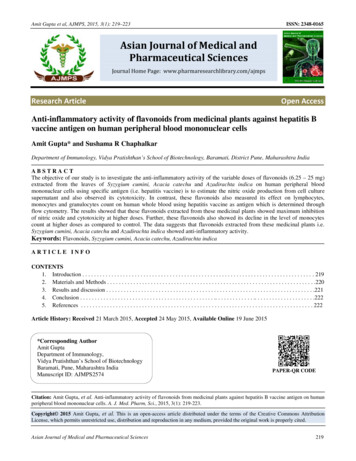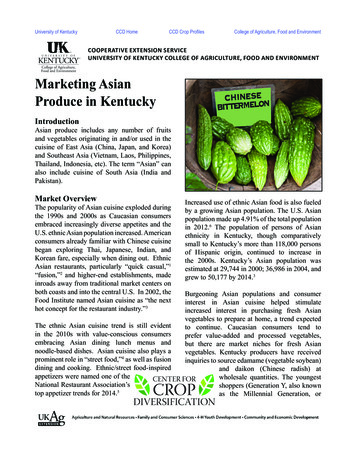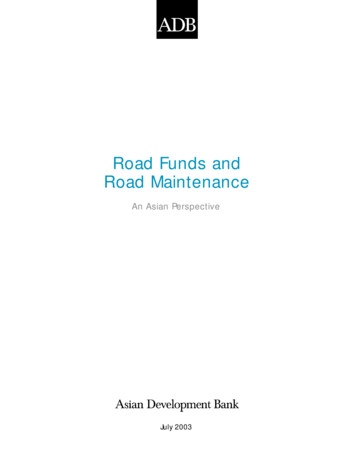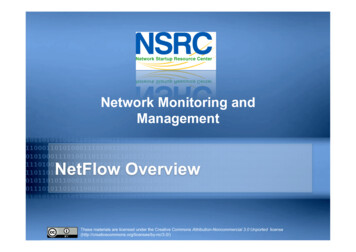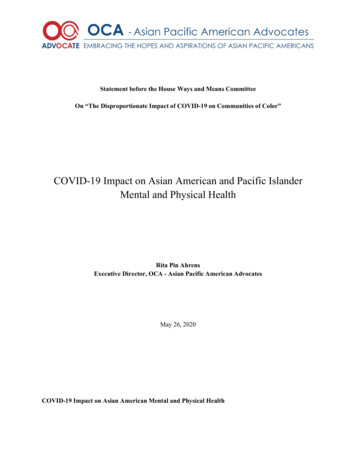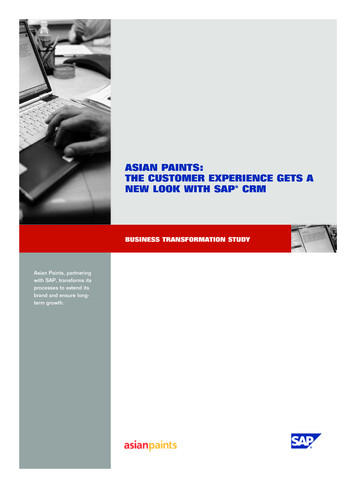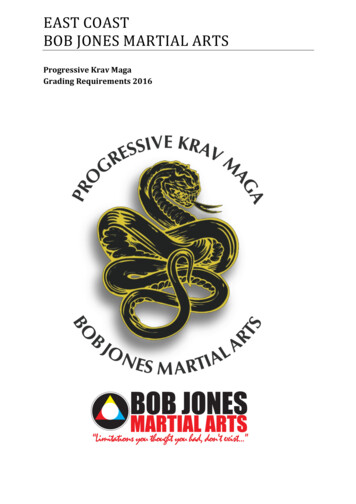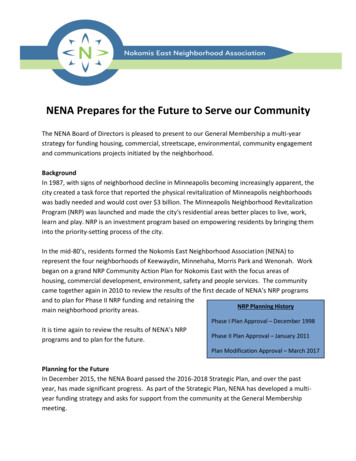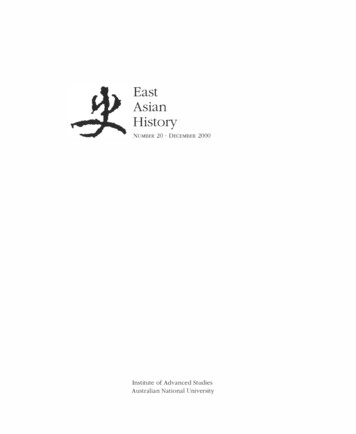
Transcription
EastAsianHistory·NUMBER 20.DECEMBER 2000Institute of Advanced StudiesAustralian National University
EditorAssociate EditorEditorial BoardDesign and ProductionBusiness ManagerPrinted byGeremie R. BarmeHelen LoMark Elvin (Convenor)John ClarkAndrew FraserHelen HardacreColin JeffcottW.]. F. JennerLo Hui-minGavan McCormackDavid MarrTessa Morris-SuzukiMichael UnderdownHelen LoMarion WeeksGoanna Print, Fyshwick, ACTThis is the twentieth issue of East Asian Historyin the series previously entitled Papers on Far Eastern History.The journal is published twice a yearContributions toSubscription Enquiries toAnnual SubscriptionThe Editor, East Asian HistoryDivision of Pacific and Asian HistoryResearch School of Pacific and Asian StudiesAustralian National UniversityCanberra ACT 0200, AustraliaPhone 61 2 61 25 3140 Fax 61 2 6125 5525email geremie@coombs.anu.edu.auSubscriptions, East Asian History, at the above address, or tomarion@coombs.anu.edu.auAustralia A 45 Overseas US 45 (for two issues)
iii.4!.1CONTENTSThe Order of Birds in Guiyi Jun DunhuangLewis Mayo60Zhou Lianggong and Chidu Xinchao : Genre and PoliticalMarginalisation in the Ming-Qing TransitionDavid Pattinson83The Construction of "Modern Y6meigaku" in Meiji Japanand its Impact in ChinaOgyu Shigehiro-translated, with an introduction, by Barry D. Steben121Confucian Populism and Egalitarian Tendencies in Tonghak ThoughtMark Setton145On the Battlefield of Mabuni: Struggles over Peace and the Pastin Contemporary OkinawaJulia Yonetani169The Fate of an Enlightenment-Twenty Years in the ChineseIntellectual Sphere (1978-98)Xu Jilin-translated by Geremie R. Barme, with Gloria Davies
ivCover calligraphyYan Zhenqing M g n, Tang calligrapher and statesmanCover illustrationOkinawan Seasar ( photograph by Ken Yonetani * )Lions have never been found on Okinawa, and the custom of revering themas 'king of the beasts' and symbols of protection is said to have originatedin ancient Persia. By the time this custom reached Okinawa via China in thefourteenth or fifteenth century, the stone figures bore less and lessresemblance to real lions. Early Chinese recordings of a stone 'lion-dog'figure placed within a shrine of the Ryukyu Kingdom (currently Okinawa)date back to 1683. From the late seventeenth century, influenced byChinese conceptions of feng shui)j,71 , the lion-like symbols or 'seasar'( - -!T - , also speJt shiisaa or seesar) became known for their powersof protection against fire, and could be found in front of the gates oftemples or castles, at entrances to the tombs of noble families, and at theentrances of villages or sacred shrines. Today, seasars are placed to ward ofany kind of evil spirit, and many different lion-like forms made not onlyfrom stone, but from clay, concrete and other materials, with varied coloursand styles, may be seen on roofs, gates and at entrances to buildings acrossthe Okinawan archipelago.(-Julia Yonetani)
ON THE BATTLEFIELD OF MABUNI: STRUGGLES OVERP EACE AND THE PAST IN CONTEMP ORARY OKINAWA Julia Yonetani"It was a struggle over history in multiple ways, with heated passions,with feverish polemics . . . . To all history clearly mattered.The question was, who would shape it?"--Barton].Bernstein, Afterword, Judgment at theSmithsonian(995)"As I stand in the sun, the voices locked in my skull from the darkmuseum room burst out and release their agony into the air. In Mabuni,the wind over the dazzling sea is heavy with the shrieks of the dying."--NormaField, In the Realm ofa Dying Emperor (991)Like the blistering summer sun, the official day for consoling the spirits of thewar dead comes early to the archipelago of Okinawa, Japan's southernmostprefecture. On 23 June 1999, while the rest of Japan (except for Hokkaido)was still ensconced in a particularly relentless rainy season, the recentlyelected Governor of Okinawa Prefecture, Inamine Keiichi f1lHJtw: - , attendedceremonies for the fifty-fourth anniversary of the Battle of Okinawa. On thisday each year, a prefectural public holiday known as Irei no Hi mt (J) S,or the Day for Consoling the Spirits, commemorations are held at the NationalPeace Memorial Park 0rf:1*lllttlbJj\OOJ:E0I1D in Mabuni J1JJt{ . Locatedat the southern tip of Okinawa's main island, Mabuni Hill, or Hill 89 as it wasreferred to by the US military, was the scene of the last organized groundresistance by Japanese forces during World War II. On 25 June 1945, thebodies of Lieut.-Gen. Ushijima Mitsuru .tf:-.!i'hfrlill, Commander of the Japanese32nd Army stationed on Okinawa, and his Chief of Staff Lieut.-Gen. Ch6Isamu were found in a shallow grave hidden within Mabuni's cliffs.1 45This article is an adaptation of "Peace wars:the politics of presenting the past in con temporary Okinawa," Working Paper,JapanPolicy Research Institute, February 2000(available at http://www.jpri.org ). I wouldlike to thank Lewis Mayo, Maxine McArthur,Sigrid Hofmeister, Mark Selden, HiyaneTeruo, Koji Taira, Brian Victoria, TessaMorris-Suzuki, Geremie Barme, ChalmersJohnson and Gavan McCormack for theirinvaluable suggestions and encouragementin the course of writing this paper, andKurihara Tatsuo for generously contributingthe photograph reproduced in Figure 5. Allremaining deficiencies are entirely my own.
1 46JULIA YONETANI) Masahide 6ta, This was the battle ofOkinawa (Naha: Naha Publishing, 1981),pp.76-8.They had committed suicide two days earlier on 23 June, since designatedthe Day for Consoling the Spirits.)On this day in 1 999, in a ceremonial speech commemorating the war,Governor Inamine issued a "Declaration of Peace for the Twenty-first Century"in which he reaffirmed Okinawa's commitment to peace, and declared thatthe last G-8 Summit of the millennium would be of "profound historicalSignificance." This gathering of heads of state was subsequently held in thesmall northern Okinawa town ofNago on 21-23July 2000. The summit,Inamine emphasized, would provide an opportunity to convey to the world"Okinawa's spirit" ( #;f,/IO)JL'), and the Okinawan commitment to achieve"step by step . . . everlasting world peace."2Yet within these apparently transparent references to "peace" lie highlydivergent memories, and motivations for remembrance. 3 Contested ideologiesof war and peace-as dialogues with the past and as visions of the future have haunted postwar Japan.4 In Okinawa, where close to one-third of thelocal population were killed in the only ground war between US andJapanese forces fought on Japanese soil, the wounds of war remain engravedon the landscape. They also take the form of a continued large-scale USmilitary presence on the islands, with close to twenty per cent of the mainisland occupied by US bases ( amounting to over seventy per cent of theexisting US military facilities in Japan). The promulgation of peace, as a"lesson of history" learnt through the horrors of war, is an essential creed ofthe anti-base movement in Okinawa. Nowhere are the tensions caused byJapan's dependence on and complicity with US-driven global militarystrategies and market forces as conspicuous, nor are the contradictions withinthe Japanese nationalist historical narrative as acute, as in this small southernarchipelago. Less than two months after Inamine's declaration and barely sixmonths since he took office, his administration found itself embroiled in aserious controversy over how Okinawa's desire for peace and its martial pastshould be represented. The echoes of the dispute reverberated throughoutthe archipelago.The controversy arose over two different "peace memorial museums"(IflfrrtJT f.-}fiI)5 recently constructed in Okinawa: the Yaeyama PeaceMemorial Museum (/UI!LlJ.lfZfO*Jf .*4tg), which opened in May1 999 on the southern island of Ishigaki 15:1i, and the New Prefectural PeaceMemorial Museum (*fi Mt. :fL.lfZfntJT .*4tg), which fimtlly openedone month later than scheduled on 1 April 2000 in the Peace Memorial Park,Mabuni. From August to October, 1 999, a fierce political dispute arose overdisplays in the two museums. The Prefectural Government's alterations todisplays at Yaeyama without the approval of the committee overseeing theproject served to highlight surreptitious attempts to change the content ofexhibits at Mabuni. The extent of attempted changes gradually becameknown through extensive reporting in the local press 6Earlier disputes in both Japan and the US over museum exhibits plannedto commemorate the fiftieth anniversary of the end of World War II2The full text of Inamine's speech, "Fusenno inori, chikaiarata" [A renewed oath andprayer against war], is published in Oki nawa Taimusu Nt*'ll?t -1 1 . A [OkinawaTimesl (hereafter OT), Evening Edition, 23June 1999 (available at www. okinawatimes.co.jp».3As pointed out by Lisa Yoneyama in thecontext of Hiroshima in Hiroshima traces:time, space and the dialectics of memory(Berkeley, Los Angeles and London: Univer sity of California Press, 1999).4For a summary of competing discourses ofpeace in post-warJapan, seeJohn W. Dower,"Peace and democracy in two systems:external policy and internal conflict," inPostwarJapan as history, ed. Andrew Gordon(Berkeley, Calif.: University of CaliforniaPress, 1993).5Literally, Documentation Center for Rever ing Peace, the Japanese directly connotesneither 'memorial' nor 'museum'.6From August to October 1999, over fourhundred news articles and numerouseditorials concerning the museum displaysappeared in the two main Okinawannewspapers, Okinawa Times and RyukyuShinpi5l)tt *H fl. For a comprehensivelist of all articles and editorials relating to thetwo museums published in local newspapers,see Rekishi no shinjitsu wa yugametewanaranai [Historical truths cannot be twistedl,a special report on the peace museum issueedited by the Okinawa Prefecture HistoryTeachers Association, Rekishi to jissen 20(Dec. 1999). Significantly, the dispute wasaccorded very little notice in the mainlandJapanese press, the exception being theweekly magaZine Shukan kinyi5bi [Fridayweekly], which featured several articles onthe peace memorial controversy in conjunct ion with the Futenma Base relocation issue.These included Arasaki Moriteru, "Okinawa,Futenma kichi iten-futatabi 'Nago e' niOkinawa no hangeki ga hajimatta" [Therelocation of Futenma base, Okinawa:Okinawa's counterattack against relocationto Nago begins once morel, Shukan kinyi5bi,no.287 OS Oct. 1999), pp.29-33, and"Konshu no kono hitokoto" [This week'swordl, ibid., no.283 (17 Sept. 1999), p.5.
1 47STRUGGLES OVER PEACE AND THE PAST IN CONTEMPORARY OKINAWAdemonstrated the difficulties involved in reflecting on the historical implications IAmerican andJapanese cultural conflicts inof war in a public setting. Ultimately, absences from the exhibit displaying the nuclear age (New York and London:M. E. Sharpe, 1997), which also includes anthe shiny revamped body of the Enola Gay at the Smithsonian National Airarticle by Ellen H . Hammond on the Tokyoand Space Museum ( NASM) in Washington, and within the polished glass memorial, "Commemoration controversies:showcases of Tokyo's Showa Museum (a:gfIHfT f. Wi') bore testimony the war, the peace, and democracy inJapan."to missing historical complexitiesJ Since 1 995, peace museums have See also Gavan McCormack, " Apologies andapologias," in 1945 War and peace in theincreasingly become the target of criticism and at times outright intimidation Pacific, ed. Peter Dennis (Canberra: Australianfrom a growing "historical revisionist" movement in Japan. In 1996, plans to War Memorial, 1999), and Mike Wallace,include exhibits on Japanese military aggression in Asia within the Nagasaki "The Battle of the Enola Gay," RadicalHistori ans Newsletter 72 (May 1995): 1-32. TanakaAtom Bomb Museum (*ilffifJJj(1 i ;jS--t ) were fiercely denounced by theNobumasa reviews the final "Sh6wakan"Nagasaki City branch of the Liberal Democratic Party ( LDP) and other right museum in "Arainagasareta 'sens6 to heiwa' wing and nationalist groups. As a result, several hundred revisions of content kokuritsu 'Sh6wakan' no s6dai na muda"were made following the museum's reopening. Similar campaigns, led by [The 'war and peace' that was erased fromview: the great waste of the 'Sh6wakan'right-wing groups and supported by the LDP and conservative sections of the Museum], also featuring an interview withpress, have been launched against the Sakai City Peace and Human Rights the head curator, Shitkan kinyobi, no.266 (14Museum ( .:w ;fo .A-*i ;jS--tWi'), and the Osaka International Peace May 1999), pp.22-5. For an early critique ofUS museums, see Warren Leon and RoyCenter ( * ROO ;fot !J ) 8 In October 1 996, an LDP ParliamentaryRosenzweig, eds, History museums in theCommittee report on the exhibit content of local peace museums, ordered United State a critical assessment (Urbanaby the then Prime Minister Hashimoto Ryutaro :fli* ft , criticized the and Chicago, Ill.: University of Illinois Press,Sakai and Osaka sites, the original Okinawa Prefectural Peace Museum at 1989).Mabuni, and various other local museums as promoting a "biased ideology."9 8 At Sakai Museum, a planned display ofhistory textbooks from various Asian countriesIt was precisely within this climate that attempted changes to the new was cancelled in 1997. The Committee forYaeyama and Mabuni museum exhibits took place.Correcting Biased War Documents ( i:The end of 1998 in Okinawa saw the anti-base pro-local autonomy :f.} 0) {; rPJ :a:-lE T ), formed in Osakaadministration of former Governor Ota Masahide :*: EB lJflJ 3'ff replaced by in 1997, actively pursued its campaign byLDP-aligned Governor Inamine. After Inamine's election, the central govern utilizing facilities at the Osaka Peace Centerto hold a conference denying the Nankingment pledged to renew negotiations over large-scale economic stimulus Massacre in January 2000.packages for Japan's poorest prefecture. In return, Inamine was put under 9 This movement is documented in Ueyamaintense pressure to secure a site for the building of a new controversial US Kazuo, "Heiwa kinen shiry6kan mondai tomilitary base to take over the functions of the US Marine Corps Air Station zenkokuteki na kagai tenji e no kogeki noat Futenma Xr'"'.l0 The museum controversy unfolded just as Inamine's ugoki" [The Peace Museum controversy andrecent attacks against critical exhibits through administration stepped up its campaign to ostracize anti-base activists and out Japan], Keshi kaji 25 (Dec. 1999): 48-50;secure Henoko ill!l!fii village in the north-east of Nago as the proposed site Ishihara Masaie, "Shin Okinawa Heiwa Shiry6for the base. Journalists, intellectuals, war survivors, anti-base peace groups, kan tenji naiy6 henk6 no keii to mondaiten"[The alteration of the exhibit content at theand museum committee members mobilized in opposition to the prefectural New Okinawa Peace Museum: issues andadministration, and struggles over history, the war, memory, and the US bases process], Rekishigaku kenkyU 722 (Feb. 2000):became ever more intertwined. The political stakes involved in representations 43-7; Nakakita Ryutar6, "Heiwa hakubutsu of peace and the past seemed only to increase with the summer heat, as a kan e no k6geki 0 ika ni hanekaesu ka" [How 7For an analysis of the different issues raisedby these two disputes, see Yui Daizabur6,Nichibei sensokan no sokoku [Discrepanciesin the perception of war between the US andJapan] (Tokyo: Iwanami, 1995). There havebeen a number of books published on theSmithsonian dispute, including Philip Nobile,led.,Judgment at the Smithsonian-the bomb ing 0/ Hiroshima and Nagasaki (New York:Marlow, 1995); Edward T. Linenthal and TomEngelhardt, History wars: the Enola Gay andother battles/or theAmericanpast (New York:Metropolitan Books, 1996); and Laura Heinand Mark Selden, eds, Living with the bomb-can the attack on peace museums becountered?], Sekai 674 (May 2000): 231-5;and Okinawa Prefecture History TeachersASSOciation, Rekishi no shinjitsu wayugame tewa naranai.10Negotiations over the relocation ofFutenmahad earlier reached a stalemate after Otarejected Tokyo's proposals to build a newoffshore base in the prefecture.
1 48JULIA YONETANIbattle of a different kind began to rage over the cliffs of Mabuni. Theconjunction of historical and political struggles within the ensuing disputehad serious implications for both the future of democratic processes in Japan,as well as for Okinawa's search for local political, historical, cultural, andeconomic autonomy. History was in the making. Who would shape it?Constructing Peace and Recollecting War in Okinawa11Hein and Selden, Living with the bomb,Introduction. As sites by which the nationmay be remembered and authenticated,they also contribute to naturalizing the stateof nationhood in the landscape. See MarshallJohnson, "Making time: historic preservationand the space of nationality," Positions 2.2(Fall 1994): 177-24912A forgotten maze of tunnels remainsunder the reconstructed Shuri Castle ,!;ff !I!a remnant of the original structure'sfinal purpose as the headquarters for theJapanese army during the war. South ofNaha, in the half-concealed "Abuchiragama"caves, where some civilians and Japanesesoldiers hid for several months after the endof the war, piles of bones, broken pots anddecaying medicine bottles lie beside recently placed offerings to the spirits. This contrastswith the nearby bustling car park of theHimeyuri Monument, erected in honour ofconscripted schoolgirls who were killed inservice. See Arasaki Moriteru et aI., eds,Kanko kOsu de nai Okinawa [Okinawa offthe tourist track], revised ed. (Tokyo:Kobunkan, 1996), pp. 1 29-3 1 .1314Ota, This was the battle of Okinawa.Many remains were taken from perhapsthe first monument and burial site created toconsole the spirits of the war dead, Konpakuno To ;m 0) , completed in February1946, south of the East gate of the HimeyuriMonument. Before removal, the remains ofup to 40,000 were said to be buried here.Relatives still pay respects and place spiritualofferings at this original burial place (Arasakiet aI., KankOkOsu de nai Okinawa, pp. 1 30--1)15Ota Masahide, Okinawa no ketsudan[Okinawa's decision] (Tokyo: Asahi Shin bunsha, 2000), p.l44.Museums and memorials, as Laura Hein and Mark Selden remind us, aremajor organs of the state "dedicated to the instruction and edification of thepublic"ll that have served as a means to control the act of commemoration.Yet as public spaces involved in the reproduction of memory, they remaininherently contentious. This is nowhere more true than in Okinawa, whichin its tumultuous modern history maintained an unequal status within Japanfor decades after the forceful abolishment of the Ryukyu Kingdom in 1879,and following the war was placed under US forces until 1 972. Across thelandscape Ryukyu/Okinawan and Japanese histories converge and compete,and the grim scenes of decaying remains in half-concealed caves contraststarkly with the glittering monuments dedicated to the heroic and noblespirits of war. 12 On the main island, the site of the most protracted fightingduring the Battle of Okinawa, it is perhaps least of all the dead who are atrest-and in the National Peace Memorial Park at Mabuni competingnarratives speak in their name.Mabuni is a rugged coral ridge which rises some 300 feet above the water'sedge on one side, boasting extensive views over hills to the west and the seabelow.13 The memorial park spreads across the ridge, and contains over fortyseparate monuments. The Battle of Okinawa War Dead National Cemetery ( 003'z:.#*,, t 1lr :71D, where remains from various local tombs have beengathered since reversion, lies at the top of the park above the Mabuni Hill ofPeace ( :flJ (J).fi:. ).14 Across both sides of the cemetery's Sacred Path ( 1IIlJ,% ), elaborate stone memorials commemorate the war dead of each pre fecture. Above, at the summit of the hill, stands the memorial Reimei no To 1Yj *, or Break of Dawn Monument, built in h
-translated, with an introduction, by Barry D. Steben 121 Confucian Populism and Egalitarian Tendencies in Tonghak Thought Mark Setton 145 On the Battlefield of Mabuni: Struggles over Peace and Past in Contemporary Okinawa Julia Yonetani 169 The Fate of an Enlightenment-Twenty Ye
